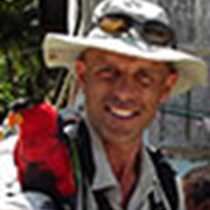At Sea to Senegal
This journey from Ushuaia to Dakar is in many ways more about the ocean crossing and the time at sea than the days when we visit remote islands. Sea days outnumber the days with landings, and there is no doubt that anyone undertaking this journey comes well prepared for and relishes the prospect of extended periods at sea. As we approach the end of our journey from South America to Africa, there are many among us wishing for a few more days at sea to finish reading that book or completing projects that we thought we would have more time for. For sea days are anything but dull; packed with presentations and time spent on deck watching for passing wildlife.
From the very start of this voyage from Ushuaia, a keen watch has been maintained from the bridge and open decks for wildlife. Today was no exception and as with previous days we encountered a mix of the expected and a few surprises that keep us excited about the prospects of the search. Among the highlights of observations today were manta rays, turtles, Portuguese man-of-war, both bottlenose and Risso’s dolphins and a variety of seabirds. The seabird highlights were several species from the high Arctic latitudes which were on their northbound migration after spending their non-breeding season (the northern winter) in warmer climes either in tropical waters or, in the case of the Arctic tern, as far south as the Southern Ocean.
This spectacle is perhaps not the easiest to appreciate, since only a few birds are visible at any one time. It does not have the visual impact of the migrations of herbivores across the plains of Africa. But what we see at any one time is repeated over many hundreds of miles of ocean, and involves many hundreds of thousands of birds. Watching these birds head north driven by a basic urge to head for breeding grounds and reproduce is a remarkable experience and a reminder that as we have now moved from the southern hemisphere into the northern hemisphere, as well as arriving in Africa we will also arrive in spring.




